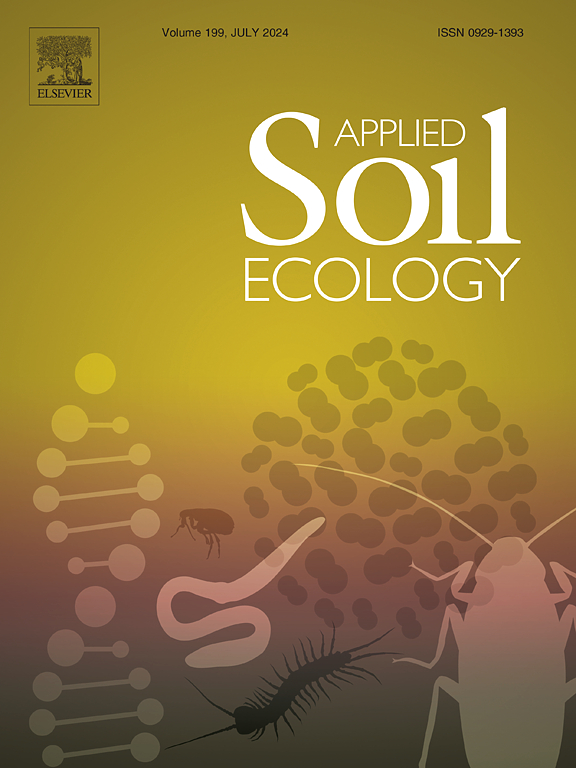The accumulation of soil microbial necromass and the changes in the depth-driven mechanisms along the altitude gradient
IF 4.8
2区 农林科学
Q1 SOIL SCIENCE
引用次数: 0
Abstract
Microbial-mediated soil carbon (C) accumulation processes are highly sensitive to mountain ecosystems, which are characterized by pronounced spatial heterogeneity. However, the accumulation patterns and regulatory mechanisms of microbial necromass C (MNC) across different soil layers along altitudinal gradients remain poorly understood. This study collected topsoil (0–20 cm) and subsoil (40–60 cm) samples along an altitudinal gradient in the Qinling Mountains, China, to analyze the spatial distribution of MNC and its contribution to soil organic C (SOC), as well as to elucidate the key factors driving MNC accumulation. Quadratic regressions analysis revealed that soil microbial necromass exhibited showed an increasing and quadratic growth trend with elevation in the topsoil and subsoil, respectively. Fungal necromass C contributed significantly more to SOC (20.8 %) compared to bacterial necromass C (2.8 %), indicating that fungal necromass dominates the accumulation of total MNC. We found that the MNC content was strongly influenced by soil properties and plant roots than by microbial properties. Random forest models and structural equation model identified soil total nitrogen and root biomass as predominant factors influencing MNC in the topsoil, resulting in MNC concentration increasing progressively with altitude. In contrast, MNC in the subsoil decreased significantly at higher altitudes, primarily due to limitations in soil nitrogen and phosphorus availability. Additionally, soil moisture and bulk density played crucial roles in regulating MNC accumulation. Overall, our study clarified that MNC accumulation was primarily constrained by soil nutrient availability. These findings provide further evidence for the long-term persistence of the SOC pools.
求助全文
约1分钟内获得全文
求助全文
来源期刊

Applied Soil Ecology
农林科学-土壤科学
CiteScore
9.70
自引率
4.20%
发文量
363
审稿时长
5.3 months
期刊介绍:
Applied Soil Ecology addresses the role of soil organisms and their interactions in relation to: sustainability and productivity, nutrient cycling and other soil processes, the maintenance of soil functions, the impact of human activities on soil ecosystems and bio(techno)logical control of soil-inhabiting pests, diseases and weeds.
 求助内容:
求助内容: 应助结果提醒方式:
应助结果提醒方式:


